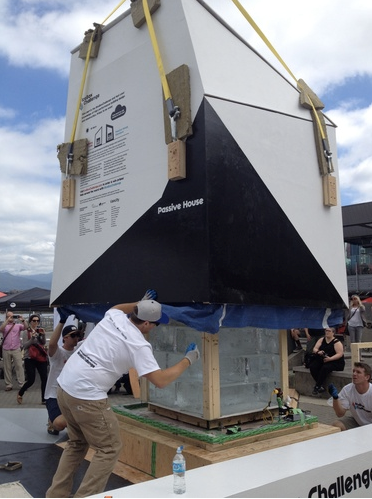On July 27, two structures were placed at Vancouver’s Olympic Village – one built to the BC Energy Code and one built to a Passive House standard. One tonne of ice was placed in each structure and the public is invited to guess how much ice will be left at the end of the competition in 18 days.
Under a new zoning bylaw that came into effect May 1, all new homes in the city will eventually have to be built close to the Passive House standard.
The Ice Box Challenge is meant to help demonstrate how, with simple changes such as thicker walls, better windows and proper air circulation, home owners can reduce energy use and cut costs. Passive Houses use up to 90 per cent less energy and require less maintenance than traditional houses, proponents say.
They also produce almost no carbon pollution and the Passive House standard can be applied to any building type, explained Passive House Canada CEO Rob Bernhardt.
“It’s great to partner with Passive House Canada on the Ice Box Challenge so people can see first-hand how Vancouver’s new standard of zero-emission, better built buildings make a real difference in quality and comfort of living,” said Mayor Gregor Robertson.
Dozens of new Passive House buildings are currently in design or under construction in Vancouver, including homes and non-residential buildings.
Vancouver-area residents can enter their estimates of ice melting online at www.iceboxchallenge.com for a chance to win a Whistler getaway. On August 14, the ice boxes will be opened and the ice measured. The winning estimate will also be announced.



